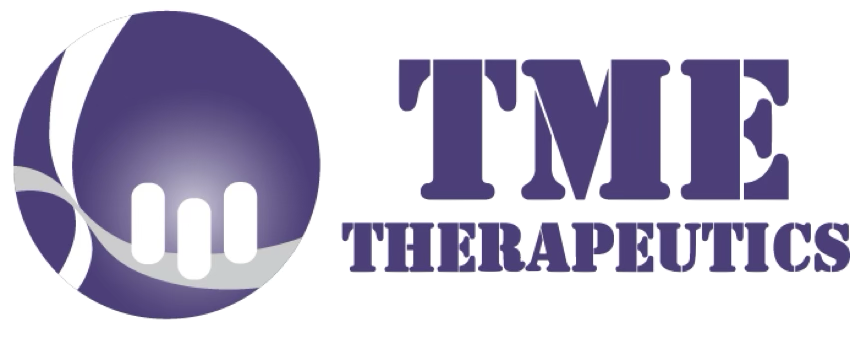癌間質抑制剤・STNM01の腫瘍内投与の意義(MOAムービー):
極めて硬く乏血性で、全身投与薬を効果的に到達させることが未だ難しい膵癌組織に対して、超音波内視鏡で直接的に投与することにより、まずは強固な癌組織構築をほぐす作用が措定されます。また、局所投与は所属リンパ節の免疫を活性化させるためには有効な投与経路であり、極度の免疫抑制状態にある膵癌においては、Tリンパ球による抗腫瘍免疫の再活性化に貢献する可能性が考えられます。STNM01の腫瘍内投与は、腫瘍部においては間質をほぐすことにより血中の薬剤や免疫細胞が到達しやすくなる「場」に変え、また、リモート(リンパ節)でTリンパ球を再活性化させるという、腫瘍局所-リンパ節のクロストークにより、Tリンパ球依存的な抗腫瘍効果を発揮することが非臨床試験で報告されています。
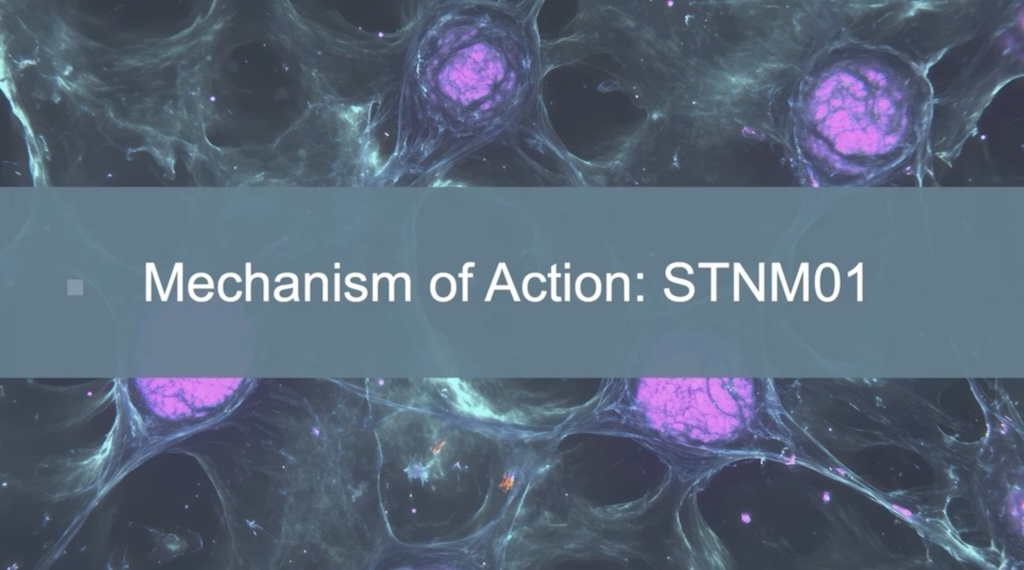
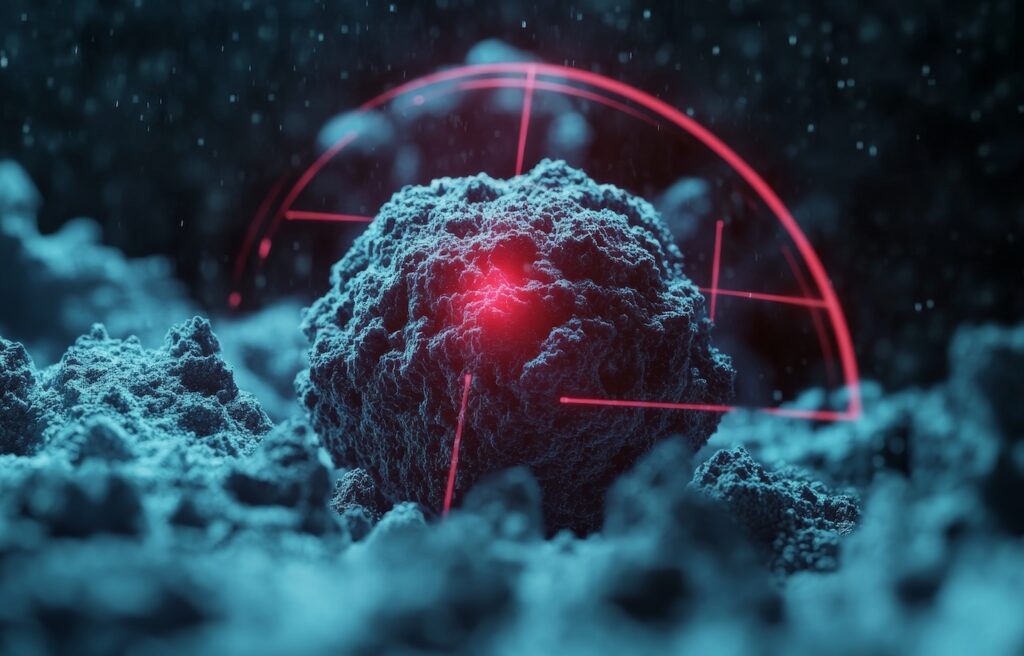
膵癌は5年生存率が8.5%と極めて不良な癌である。切除不能進行膵癌においては一次化学療法(ファーストライン:1L治療)としてゲムシタビン(GEM)関連レジメン若しくはフルオロウラシル関連レジメンの確立により治療成績は向上しつつあるが、ほとんどが二次化学療法(セカンドライン:2L治療)あるいはBSC(ベスト・サポーティブ療法)へ移行する。2L治療の平均的な全生存期間(Overall survival: OS)の中央値は4.5ヵ月、オニバイドレジメンで6.1ヵ月、と未だ良好とは言い難い。治療抵抗性の原因となる病態として「強固で豊富な間質」及び「極度の免疫抑制」が注目されている。しかし、ワクチンや免疫チェックポイント阻害剤の効果は他の癌腫と比較して極めて乏しく、抵抗性病態を打破するため、癌間質抑制治療(Stromal modifying agents)とのコンビネーション治療が期待されてきている。
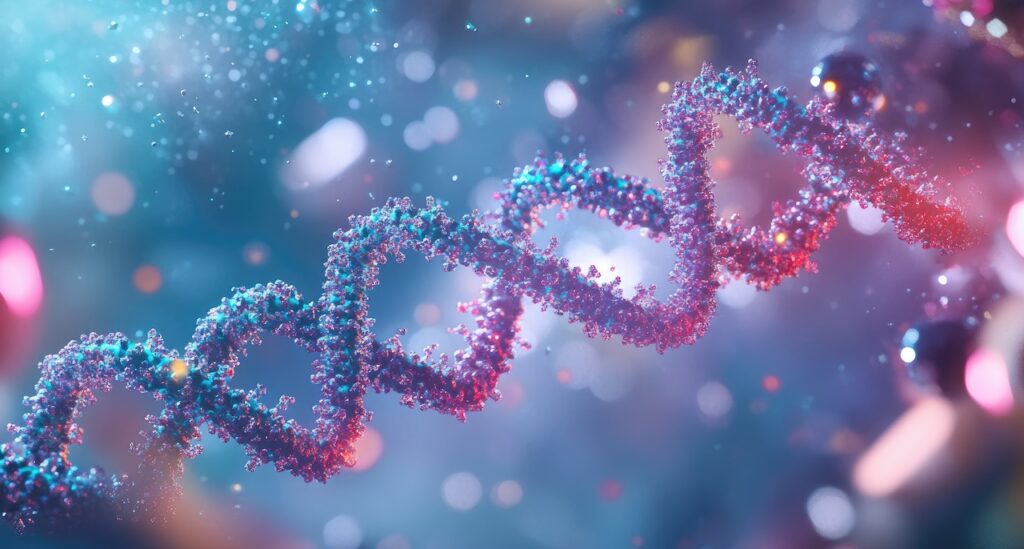
糖硫酸転移酵素CHST15(CHST15)は、高度に硫酸化されたマトリックス型プロテオグリカンであるコンドロイチン硫酸E(CS-E)を合成する蛋白質である。実験的に膵癌由来のCHST15をリボ核酸(RNA)干渉(RNAi)でノックダウン(KD)すると、in vitro、in vivoマウスモデルともにTリンパ球依存的(T cell-dependent anti-tumor effect)な腫瘍除去(殺傷)効果が誘導・促進される。STNM01はヒトCHST15(hCHST15)遺伝子の発現を抑制する27mer 2本鎖RNAオリゴ核酸であり、RNAiのメカニズムで膵癌細胞のCHST15メッセンジャーRNA(mRNA)に結合、切断し、CHST15蛋白質の発現及びCS-Eの生合成を阻害する。
担癌マウスモデルを用いたin vivo試験では、腫瘍内に複数回投与したSTNM01は、腫瘍局所の間質抑制効果(強固な線維化及びネトーシスを抑制)、骨髄由来抑制細胞(MDSC)抑制効果と同時にTリンパ球浸潤P促進効果及びTリンパ球依存的な抗腫瘍効果を示した。また、1L GEM + ナブパクリタキセル(nab-PTX)療法不応の切除不能進行膵癌を対象とした第 I/IIa相臨床試験では、2L治療としてS-1療法との併用で、超音波内視鏡ガイド下穿刺術(Endoscopic ultrasound-fine needle injection: EUS-FNI)によるSTNM01の腫瘍内投与が実施され、腫瘍内Tリンパ球の増加が認められた。また、腫瘍内Tリンパ球の増加の程度とOSとの正の相関が認められた。
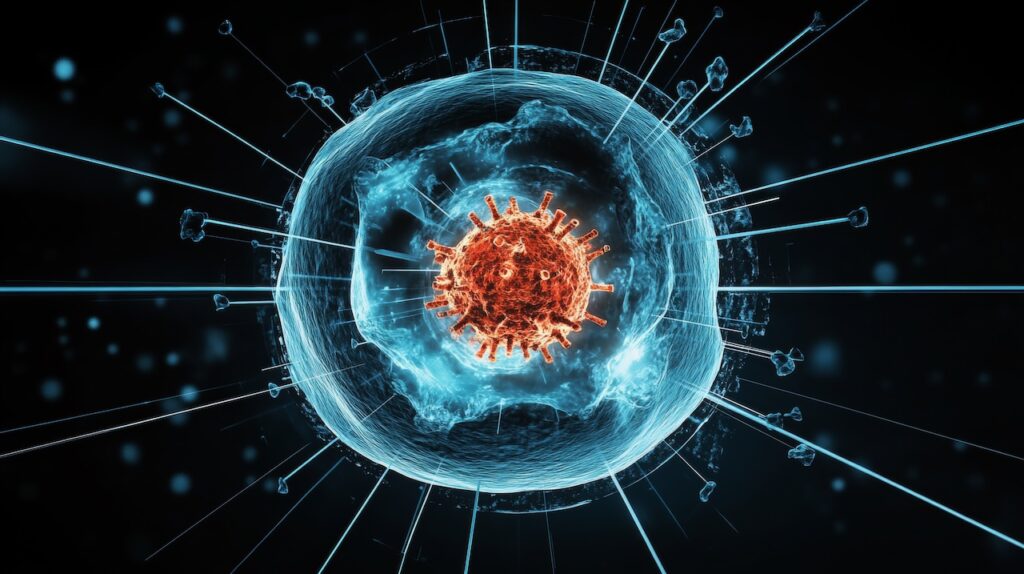
これらの成績により、STNM01によりCHST15遺伝子の発現を効果的に抑制すると、CHST15蛋白質並びにCS-Eの産生低下をもたらすことが推定され、膵癌局所の間質リモデリング病巣を抑制することにより、Tリンパ球依存的な抗腫瘍効果を発揮し得ることから、腫瘍免疫が抑制されている切除不能進行膵癌に対する新規医薬品としての治療効果が期待される。
